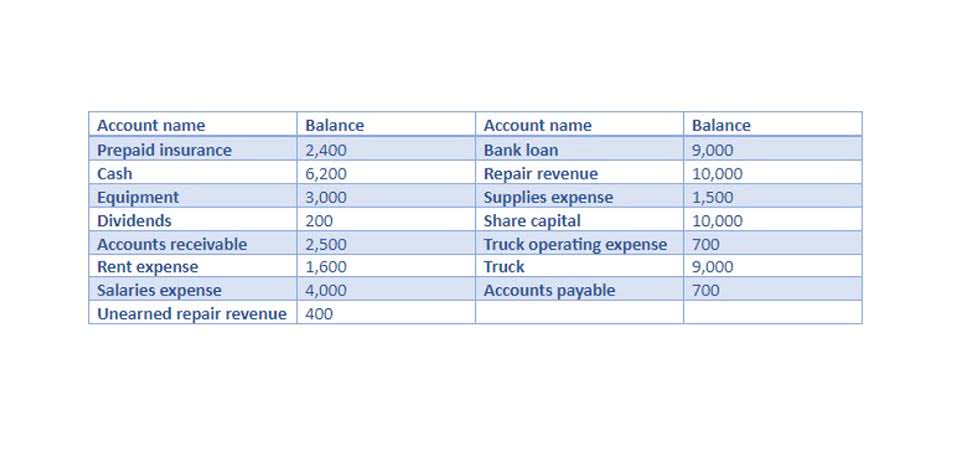
On the other hand, a small online store—one that has days when there are no new transactions at all—could reconcile on a weekly or monthly basis. We’ll go over each step of the bank reconciliation process in more detail, but first—are your books up to date? If you’ve fallen behind on your bookkeeping, use our catch up bookkeeping guide to get back on track (or hire us to do your catch up bookkeeping for you). If, on the other hand, you use cash basis accounting, then you record every transaction at the same time the bank does; there should be no discrepancy between your balance sheet and your bank statement.
Any credit cards, PayPal accounts, or other accounts with business transactions should be reconciled. Making sure a company’s and its bank’s listed balances align is also a way to ensure the account has sufficient funds to cover company expenditures. The process also enables the company to record any interest payments the account has earned or fees the bank has charged. Before you reconcile your bank account, you should ensure that you record all the transactions of your business until the date of your bank statement. But, you will record such transactions only in your business’ cash book only when you receive the bank statement.
Video Explanation of Bank Reconciliation
To successfully complete your bank reconciliation, you’ll need your bank statements for the current and previous months as well as your company ledger. An online template can help guide you, but a simple spreadsheet is just as effective. ReconArt is a complete end-to-end bank reconciliation software for businesses across various industries. NCH Express Accounts is a locally installed accounting software with a free version that you can use for bank reconciliation. Although it’s not as full-featured as QuickBooks Online and Xero, it can be sufficient for businesses with lower transaction volumes. It has a free plan, but you can upgrade to a paid version to access additional features, such as billing, invoicing and check printing.
Historically, reconciliation accounting was a relatively manual process, with the reconciliations themselves taking place in an Excel spreadsheet or on physical pieces of paper. However, cloud accounting software has made this a much more efficient process by the adoption of automation features, ensuring that matching transactions is hassle-free. Frequent bank reconciliations help you spot these types of errors, stay on top of your receivables, and make sure your outstanding invoices and bad debt expenses don’t spiral out of control. For instance, it may happen that you make an invoice payment to a supplier by check, and they tamper with it by increasing the withdrawal amount.
Resources for Your Growing Business
Bank reconciliation is a fundamental process that ensures the alignment of internal records with external bank statements. This article highlights the importance of bank reconciliation, and its role in maintaining financial control, accountability, and protection against errors and fraud. A bank reconciliation is matching information regarding cash accounts from accounting records to the corresponding information on bank statements. Simply put, a reconciliation is how a business makes sure it has the cash it thinks it has. Bank reconciliation is the process of comparing your business’s financial records with your bank account statement. It can also be defined as the document or statement that outlines any differences between the transactions in your bank account and the accounts balances in your financial reports.

Once the balances are equal, businesses need to prepare journal entries for the adjustments to the balance per books. To do this, businesses need to take into account the bank charges, NSF checks and errors in accounting. That part of the accounting system which contains the balance sheet and income statement accounts used for recording transactions. bank reconciliation The reconciliation statement allows the accountant to catch these errors each month. The company can now take steps to rectify the mistakes and balance its statements. Ideally, the best account reconciliation software offers essential features, such as automatic matching, bank feed connections, customized bank rules and accounting integration.
Step #3: Work Out the Balance as Per Cash Book Side of the Bank Reconciliation Statement
The reconciliation process, often conducted monthly, involves meticulously comparing these statements against the business’s own financial records. This practice is pivotal for identifying discrepancies, such as timing differences or unauthorized transactions, and rectifying them promptly. By adhering to this routine, businesses maintain the integrity of their financial statements, uphold regulatory compliance, and ensure a true reflection of their financial health. Hopefully, once you’ve dealt with deposits in transit, outstanding checks, interest payments, and bank fees, your bank statement and internal accounting records will match. Resolving the issue could mean paying a bill, depositing a check, or entering a forgotten transaction into your general ledger. Add the amount of deposits in transit and subtract the amount of any outstanding checks from your bank statement’s cash balance to arrive at (and record) an adjusted bank balance.
- The bank records all transactions in a bank statement (also known as passbook) whereas the customer records all their bank transactions in a cash book.
- Or maybe you scheduled a rent payment and listed it in your chart of accounts as usual, but the notification that your payment bounced went to your spam folder.
- The second entry records a debit to the bank reconciliation account and a credit to the cash balances of any other accounts impacted by the discrepancy (e.g., Accounts Receivable or Accounts Payable).
- However, in the bank statement, such a balance is showcased as a debit balance and is known as the debit balance as per the passbook.
- As mentioned above, debit balance as per the cash book refers to the deposits held in the bank.
- However, there can be situations where your business has overdrafts at the bank.
- The purpose of bank reconciliation is multifaceted, primarily aimed at ensuring the accuracy and consistency of financial records between a company’s internal accounts and its bank statements.
The primary purpose of bank reconciliation is to identify any discrepancies or irregularities between the two sets of records. This serves as a safeguard against errors or potential fraudulent activities before the company finalizes its financial reports. Bank reconciliation is the process of comparing your company’s bank statements to your own records, ensuring all transactions are accounted for. An effective bank reconciliation process can identify any discrepancies in your company’s records, and help prevent fraud and theft from your bank account. A bank reconciliation statement is a document that compares the cash balance on a company’s balance sheet to the corresponding amount on its bank statement. Reconciling the two accounts helps identify whether accounting changes are needed.




